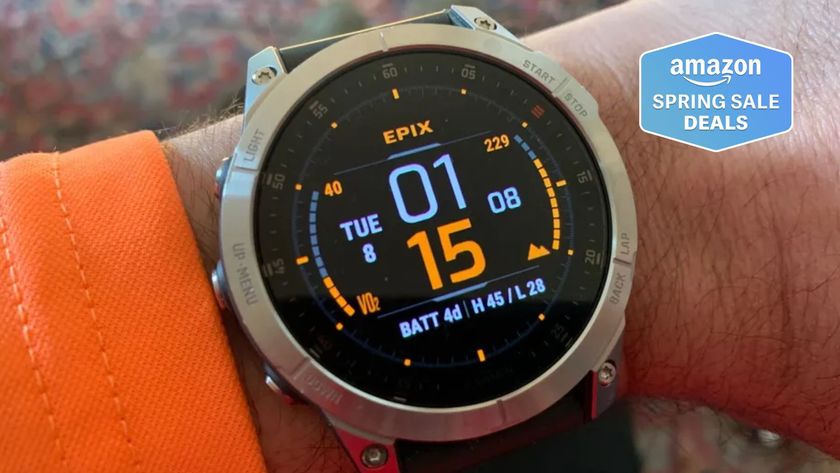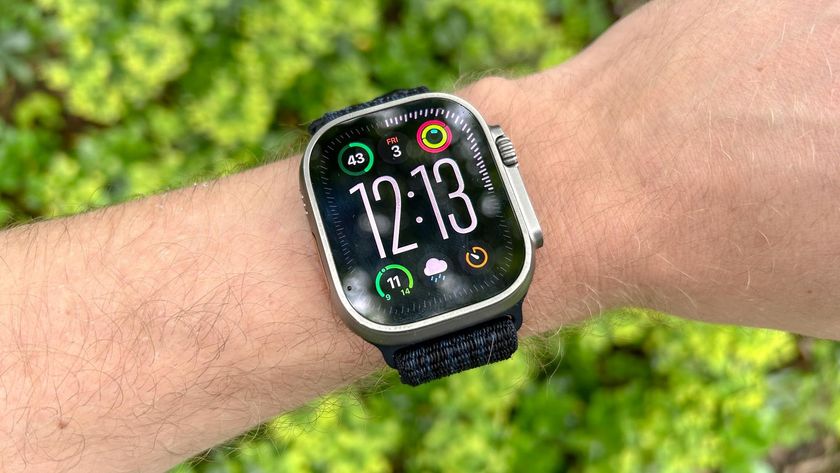Honor Watch Magic Hands-On: This Smartwatch Has a Week-Long Battery
Honor’s wearable finally heads to Europe. Here's what stands out about the €179 Honor Watch Magic.
The Honor View 20 may well have been the big star at Honor’s big European keynote yesterday (Jan. 22), but the Huawei-owned brand also used the stage to announce that another of its previously China-only products was coming to Europe — the Honor Watch Magic.

This might be the first time that we have seen this wearable outside of China but, my, does it look familiar.
Design: Slim and light
The design and features of the Honor Watch Magic are much like the Huawei Watch GT, bar a couple of key differences.
MORE: Best Smartwatches
While the Honor Watch Magic boasts a battery life that will last a week, which is perfect for those who don’t want to charge up their wearables nightly, the Watch GT has double this capability.
This reduction in battery life does have its upside: the watch is a whole lot thinner than its Huawei stablemate, measuring: 42.8 x 42.8 x 9.8mm (1.69 x 1.69 x 0.39 inches), compared to the GT’s chunkier 46.5 x 46.5 x 10.6mm frame.
Design-wise, the stainless-steel bezel certainly makes the Honor Watch Magic look and feel premium and, well, more like a watch.

There are two buttons on the right-hand side, The top one powers the device and the bottom one comes into use when you setup your own shortcuts.
Flip it over and you have the charging port, which is one of the only tell-tale signs that the Watch Magic is actually a smartwatch — at least until you touch the screen.

Specs: Waterproof and fitness-ready
Another change between the Watch Magic and Watch GT is that the faces are different sizes, albeit with the same underlying technology.
The Watch Magic screen sports a 1.2-inch AMOLED, with a resolution of 390 x 390 pixels. That equates to a pretty impressive 326 ppi. In comparison, the GT Watch’s face measures 1.39 inches.

The Watch Magic weighs a nice and light 32.5g (1.16 oz), which makes it both lighter and thinner than the Apple Watch Series 4.
The reason for the week-long battery life is that the Honor Watch Magic does not use WearOS. Instead of Google’s OS for smartwatches, Honor (like Huawei) has opted for a variant of the operating system, called LightOS.
Anyone familiar with WearOS will be at home on the Watch Magic, though. The menu layout is the same as what you'd get from a wearable running Google's OS, as are much of the features. There’s the all-important Workouts section where you can track your gym sessions and the like. There’s also a accelerometer, gyroscope, heart rate monitor, barometer and compass on board. Honor is confident that run tracking and the like is best in class, as it uses data from the big three satellite positioning systems: GPS, Glonass and Galileo.

What you don’t get with the Honor Watch Magic is NFC connectivity or access to Google Pay, which is a big shame.
Outlook

The Honor Watch Magic isn’t exactly new, given it’s already out in China, but it is new for Europe and certainly one to consider if you are looking for a budget-friendly smartwatch. Some features (such as flight and hotel information through notifications) are only available if you are using an Honor phone, but then you probably wouldn’t even consider this wearable if you hadn't already bought into the Honor brand.
Another variant available, the Honor Watch Dream, has the same specs but offers smaller, pastel-colored straps.
The Honor Watch Magic is available in black, moonlight silver or dark blue, and will cost €179 (around £155), which is around £20 cheaper than the GT. It's available now, with a limited edition red version also part of the lineup.
U.S. shoppers remain on the outside looking in at this watch. As with other recent Honor products, the Honor Watch Magic isn't launching in that market.
Sign up to get the BEST of Tom's Guide direct to your inbox.
Get instant access to breaking news, the hottest reviews, great deals and helpful tips.
Marc Chacksfield is Director of Shortlist Media and Editor-In-Chief of Shortlist. He's been a technology and entertainment journalist for 15 years and was previously UK Editor In Chief at Tom's Guide, TechRadar and Digital Camera World. He's also written for the likes of T3 and Tom's Hardware. In his spare time he tries to play guitar, PlayStation and supports Chelsea.












-
Mudskipper GT and this one are best available smartwatches imo. They have removable straps, good battery life, GPS and Galileo support, nice display and good design, they're water and dust proof. App is well designed and it supports google fit. However no onboard music player breaks the deal for me, it's a small thing that too important for me in a smartwatch.Reply





